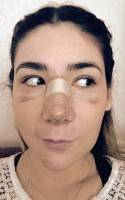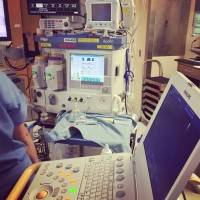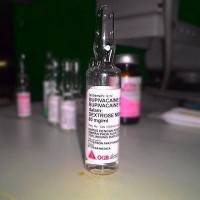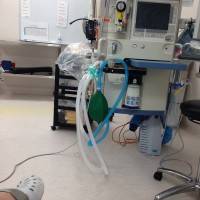Rhinoplasty under sedation
Anesthesia options for rhinoplasty
Choosing the right anesthesia for you is a discussion you have with your surgeon and anesthesiologist. One or the other form is ok.
Some surgeons prefer twilight because a tube is not in their way while operating. I prefer general using an LMA because it is safer than twilight. (Steven Wallach, MD, Manhattan Plastic Surgeon)
Sedation vs. General Anesthesia for Rhinoplasty
My preference for rhinoplasty is general anesthesia. Some physicians push using “twilight” anesthesia as they can administer it themselves, and thus be more cost competitive as you do not have to pay the anesthesiologist a fee.
I like to have an anesthesiologist watching your breathing and blood pressure, so I don’t have to be distracted by those issues, and can solely concentrate on the cosmetic outcome of our surgery.
Since you are already paying for an anesthesiologist, then the choice of twilight vs. general boils down to safety – and I think general is the safer choice.
The anesthesiologist has more control over your vital functions up front, and will not run into difficulty if you happen to be a slow metabolizer of medications and get “too deep” in the middle of twilight anesthesia.
Also, specifically for rhinoplasty, the laryngeal mask airway or endotracheal tube that is used to secure your airway adds extra protection to avoid fluid or blood from reaching your lungs. (We are operating on your nose, and there will be a little bit of bleeding.)
Discuss your concerns with your surgeon and learn their preferences. See if you agree with the logic, and don’t cut corners on cost. (Michael A. Bogdan, MD, FACS, Dallas Plastic Surgeon)
As long as you’re comfortable with your plastic surgeon, either form of anesthesia can be given for a rhinoplasty. However, if you’re anticipating major work on the inside of your nose general anesthesia may offer a safer mode of anesthesia as your airway will be better protected. Also, less blood will get into your stomach which may help with the post-operative nausea. (Jeffrey E. Schreiber, MD, FACS, Baltimore Plastic Surgeon)
I have been doing noses under twilight for over 30 years. The anesthesiologist I work with is great at it. This is an individual preference and each doctor will be different. There is no one correct answer. (William B. Rosenblatt, MD, New York Plastic Surgeon)
Anesthesia for rhinoplasty
Having done rhinoplasties both ways I prefer general anesthetic for several reasons. Patients don’t swallow any blood which minimizes the risk of nausea and vomiting after surgery.
I find it is better for my anesthesiologist to control the airway and keep the patient safe and comfortable at the same time. If I am doing only a tip rhinoplasty very often I will do this under local with sedation.
I hope this helps you but instead of worrying about the anesthesia (unless you have a specific medical problem that would be cause for concern) discuss this with your your surgeon to come to a solution. (Steven Schuster, MD, Boca Raton Plastic Surgeon)
Twilight sleep vs General Anesthesia for Rhinoplasty
General anesthesia is a better choice for rhinoplasty. During the procedure you can have some bleeding in the nose which then trickles down the throat. It can go into your lungs while you are under twilight sleep and cause a penumonia. With general anesthesia you have a breathing tube that prevents that hazard. (Tanveer Janjua, MD, Bedminster Facial Plastic Surgeon)
Anesthesia for rhinoplasty
There really is not a one-size-fits-all answer to which type of anesthesia is best. In general, for quicker or smaller procedures conscious sedation is okay. For more extensive procedures, general anesthesia may be preferred. It really has to be a decision between you, your surgeon and your anesthesiologist. (David Shafer, MD, New York Plastic Surgeon)
I prefer general aneathesia when I perform Rhinoplasty Surgery.
If you require Rhinoplasty with septoplasty or cartilage grafting, then I think general anesthesia is preferred. Your nose is part of your airway, and if you’re under “twilight” sedation, you may begin to cough as some blood drips into your throat. I perform all of my Rhinoplasty Surgeries in either an accredited surgi-center or hospital with an experienced, board-certified anesthsiologist. I feel that having your airway secure, and having you asleep (general anesthetic) is my personal preference. (Eric M. Joseph, MD, West Orange Facial Plastic Surgeon)
Rhinoplasty surgery with local, twilight, or general anesthesia
Rhinoplasty surgery is not one operation, but rather a million potential operations. The procedure may be performed under local, twilight (IV sedation), or general anesthesia.
Based on multiple factors, including but not limited to the exact rhinoplasty procedure, patient preference, or co-existing medical conditions, any of these anesthesia methods may be utilized. There isn’t a best answer, and it’s a very personalized approach. (Houtan Chaboki, MD, Washington DC Facial Plastic Surgeon)
Rhinoplasty Anesthesia options
Either general anesthesia or twilight (monitored IV sedation) will work well for a rhinoplasty. Make sure the anesthesia is administered wither by a Board-Certified Anesthesiologist or a experienced Nurse Anesthetist – both are capable of providing a safe anesthetic. (Shahram Salemy, MD, FACS, Seattle Plastic Surgeon)
Rhinoplasty; Twilight Sedation or General Anesthesia?
We prefer to use IV sedation with diprivan with the placement of a LMA (Laryngeal Airway Mask, to prevent secretions from going into the stomach or airway) followed by local anesthestic injections. This type of anesthesia is very safe as the patient is able to breathe on their own without assisted ventilation, and they do not require inhalational general anesthestics.
For many years we used “twilight” anesthesia with great success, but having used both we have found that most patients prefer “not seeing, or hearing anything”. Most importantly choose your rhinoplasty surgeon carefully. (Michael A. Persky, MD, Encino Facial Plastic Surgeon)





